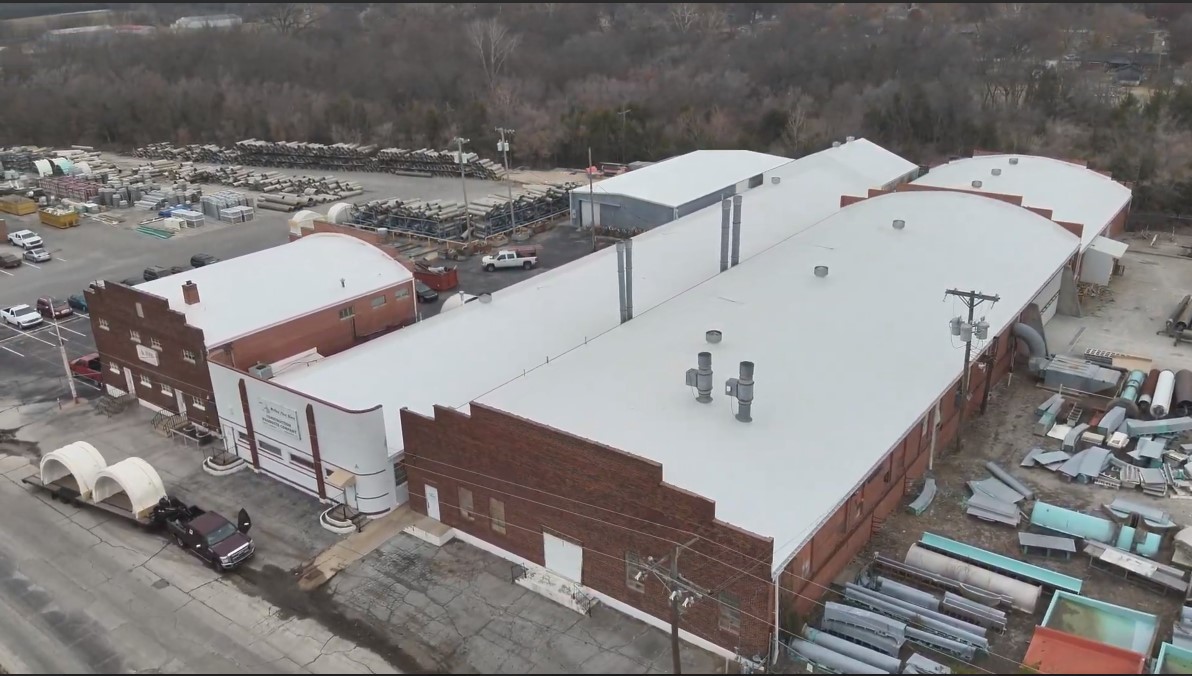There are many variables to take into consideration when determining the cost of a roof replacement or re-cover on a commercial building.
Commercial roof systems are inherently more complex than their residential counterparts. It is relatively easy to come up with a unit pricing system for residential roofs with some minor adjustment for variables such as steepness, height, and access. This is nearly impossible to do with low-slope commercial roofs.
One of the chief ways that low-slope roof systems differ from steep-slope is in the substrate. Most steep-slope systems are comprised of the roofing material and a thin layer of underlayment on top of the roof deck. In low-slope roof systems, there is almost always at least one (if not 2+) layers of insulation underneath. In fact, most of the material cost of commercial roofing systems is in the substrate rather than the actual roof covering.
Here’s a rundown of some of the more important price-determining factors on a commercial roofing project:
Roofing Materials Used
There are many different options for roof coverings, accessories, substrates, and attachment/installation methods. The quality and characteristics of these can influence the cost of materials for a given project significantly. Certain materials are also more labor-intensive than others to install, adding to the overall project cost.
Existing Roof System Type and Condition
The composition of the existing roof system in terms of material type(s) and number of layers can have a large impact on the overall project cost. If there is a large amount of moisture present in the roof substrate from previous leaks, this will have to be addressed prior to installing the new roof, possibly involving a complete tear-off. If there are multiple layers of roofing present, this further increases the chances that a complete tear-off will be necessary.
Roof Decking Type and Condition
There are several common deck types, such as wood, metal, and even concrete. The type of decking on the building directly impacts the type and quantity of materials, such as fasteners, needed for the project as well as the labor-intensiveness of the installation.
The condition of the deck also makes a difference. Rotten wood decking or rusted metal decking can be a cause for concern and require repairs. It is nearly impossible to predict how much, if any, decking will need to be replaced, but pre-construction fastener pull-tests can help determine the general strength and condition of the deck and if it is able to support a new roof system.
Local Building Code Adoptions
The version of the International Building Codes adopted by the city or county in which the project takes place can have a large impact on the overall project cost.
For example, newer versions of the International Energy Efficiency Code (IECC) require far more insulation above the roof deck than older versions, increasing material and labor costs drastically.
In addition, some municipalities have created additions to the that make the project requirements more costly than the standard version of the International Building Codes.
Building Characteristics
Believe it or not, a building’s location, height, and access can have a large impact on the cost of a roofing project. Higher buildings are more likely to require a lift during the project to load and unload materials and remove debris. If there is not adequate space near the building to stage materials or place a dumpster, labor costs for the project may rise.
Summary
The best way to determine what a commercial roofing project may cost is to call a qualified commercial roofing contractor in your area and have them provide their recommendations and estimate on a long-term solution for your building’s roof system. Many will even help you to budget and predict when this expense will be necessary.
While commercial roofing projects can be extremely costly, they don’t always have to be. Most of the conditions that lead to expensive roofing projects could have been mitigated with proactive inspections and routine maintenance. If you’d like to start being proactive with your building to save money in the long run, please don’t hesitate to give us a call.

